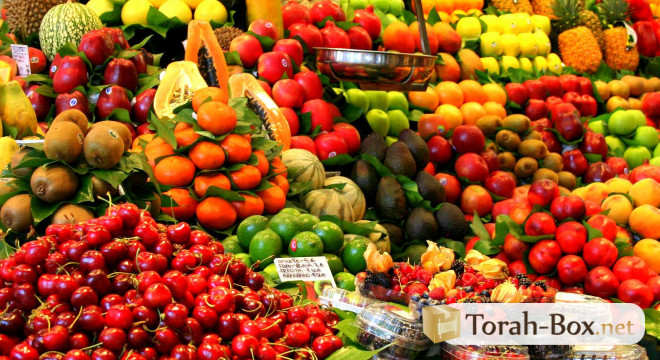
Tu BiShvat
Tu BiShvat: The Segulot of Each Fruit According to the Kabbalists
The ritual of Tu B’Shvat is not a Halachic obligation but a custom containing marvelous segulot (metaphysical phenomena derived from the Torah) that bring abundance and blessings.
Each species has a particular "segula". It is enough to look at the species and to have the proper intention while eating it, to benefit from the goodness it can bring. The Torah-Box team suggests:
Wisdom and Parnassa
Wheat (cakes, bread) is a segula for lucidity, wisdom, and success in studies. Also, ask for plenty of parnassa (sustenance).
Shalom Bayit
Beer and pearl barley are a segula for Shalom Bayit. A Sota (a woman suspected of adultery, who was then exonerated) had to bring a barley sacrifice to purify herself for her husband, and she thus deserved to have a boy.
Marriage
Wine, grape juice, raisins, stuffed grape leaves are a segula for finding one's Zivug (spouse). It is not for no reason that during a wedding we sing "The grapes of the vine assemble with the grapes of the vine". Grapes are also a segula for fertility, "Your wife will be like a fruitful vine".
Pure Mouth
The pomegranate has the same color as the lips, as it says, "Your lips are like a scarlet thread." Its segula is in guarding the mouth against Lashon hara (gossip) and bad words.
Righteous Children
The olives and its oil are a segula to have children who are Tzaddikim (righteous). In the same way that the leaves of the olives do not fall, so we hope that our children will not go in the wrong direction. But also "a good name" because "A good name is better than scented oil" and a good memory because olive oil is a segula for the memory.
Health
The date is a wonderful segula for greatness and success, as the date is the heart of the sky, so we ask "help us to rise like the date". The date is also a segula for healing and good health.
Preparation for the Seder According to Kabbala
The custom of the Kabbalists is to prepare 4 different plates, each plate containing between four and ten fruits, making in all between 12 and 30 fruits.
1st Plate: Put Fruits Eaten Whole, the Fruit and its Peel
For example grapes, apples (small seeds are considered to be part of the fruit), citron jam, lemons (small or as jam), pears, strawberries, carob, quince, guavas, persimmons.
Pray to Hashem: "May it be your will that we are beautiful on the outside and beautiful on the inside.”
2nd Plate: Put Fruits whose Outside is Eaten and the Interior Thrown Out
For example olives, dates, hackberries, apricots, peaches, plums, blueberries, lychees, cherries, mangoes.
Pray to Hashem: "May it be your will, that we have the merit of removing from within us all baseless: hatred, jealousy, sadness, rivalry, resentment, and bitterness."
3rd Plate: Put Fruits whose Peel is Thrown but the Inside is Eaten
For example pineapple, chestnuts, pomegranates, walnuts, almonds, pistachios, hazelnuts, pine nuts, grapefruit, kiwi, coconut or cardamom...
Pray to Hashem: "May it be Your will, that we may see kindness and gentleness in every person, including ourselves. And may we have the merit of judging everyone favorably, without seeing in him any "peel", G-d forbid. "
4th Plate: Put the Seven Fruits of Israel
Good Seder to you all!
Torah-Box.net Account
To access the entire Torah-Box.net website, sign up for free in less than a minute.
Weekly Parsha
 Candle Lighting - New York
Candle Lighting - New York
Friday January 2nd, 2026 at 16:22 *Shabbat ends at 17:27 *
change my location
* Times given as an indication, check the times of your community









